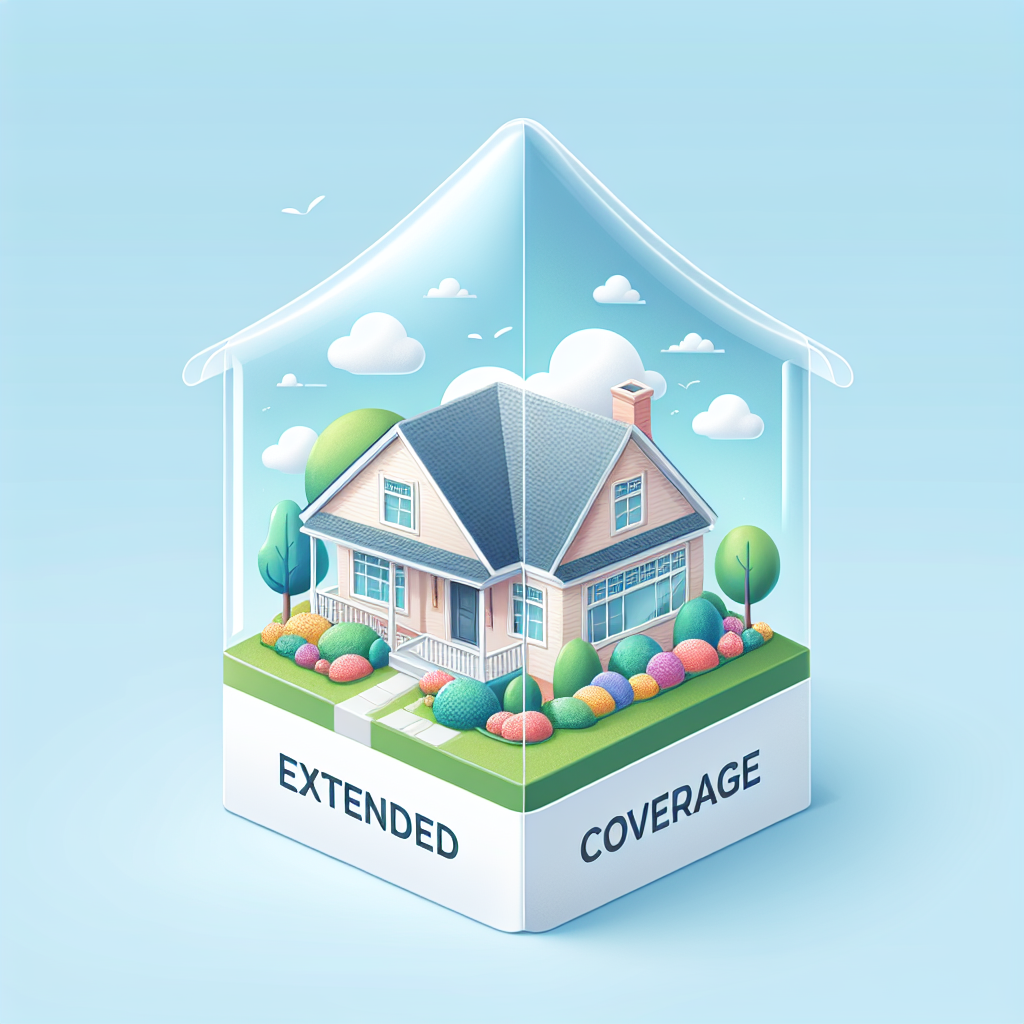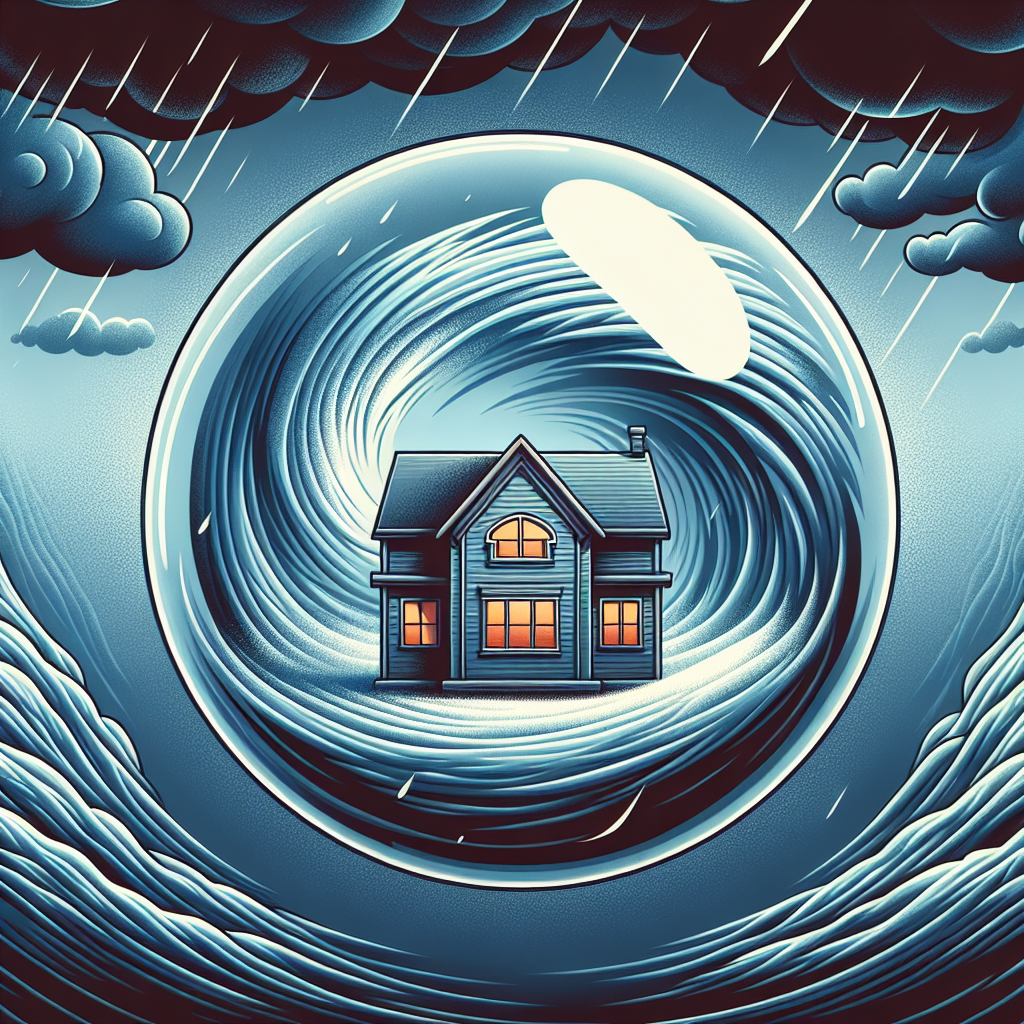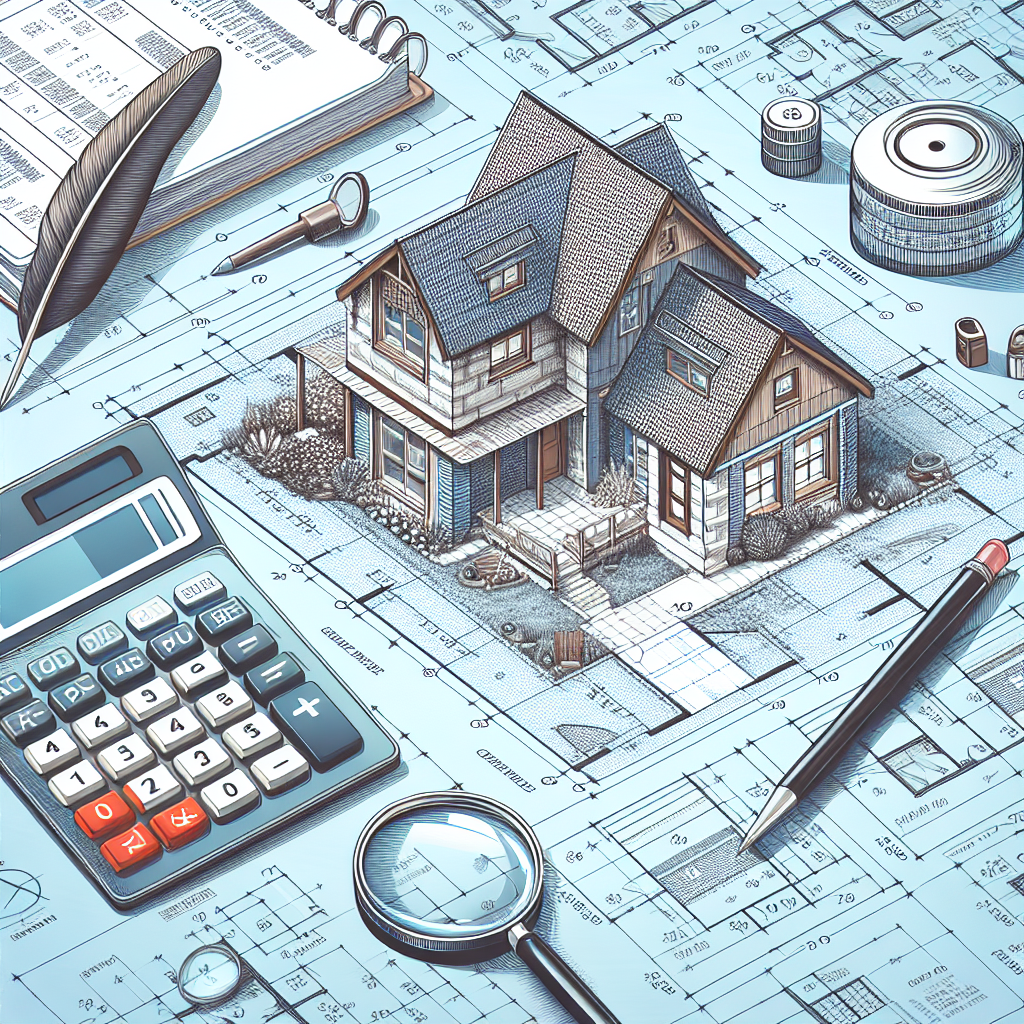Filed under Home Insurance on
Extended Coverage Home Insurance: What You Need to Know

Standard homeowners policies are great until they’re not. A burst pipe, an outdated building code, or a hidden utility line failure can turn a routine claim into a budget-buster. Extended Coverage Home Insurance helps close those gaps by layering key endorsements and higher limits onto your base policy so real-world losses are actually covered.
This guide breaks down what “extended coverage” really means, where it adds value, how much it tends to cost, and how to compare quotes with confidence. You’ll see practical examples, decision checklists, and the latest trends influencing risk and premiums so you can protect your home—and your savings—without overpaying.
What Extended Coverage Home Insurance Means Today
At its core, a homeowners policy (often an HO-3 or HO-5 form) covers your home, your belongings, and your liability for many common perils. But it excludes or limits several high-impact risks, including flood, earthquake, sewer backup, equipment breakdown, and building-code upgrades. That’s where added endorsements and enhanced limits come in.
Extended Coverage Home Insurance combines those upgrades into a more comprehensive package tailored to how you live, where you live, and what it would actually cost to rebuild your home today. Think of it as customizing your policy around the losses most likely to hit your household—rather than relying on a one-size-fits-all template.
What extended coverage typically includes
Rebuild and dwelling upgrades
- Extended or guaranteed replacement cost: Boosts your Coverage A (dwelling) limit by 25%–50% or more if a total loss exceeds your stated limit. This protects against sudden spikes in labor and materials during widespread disasters.
- Ordinance or Law coverage: Pays to bring your home up to current building codes after a covered loss. Older homes especially need this protection; code upgrades can add tens of thousands to a rebuild.
- Inflation guard: Automatically adjusts your dwelling limit to keep pace with construction cost inflation between renewals.
Water and utility protections
- Water backup and sump overflow: Covers damage from backed-up drains, sewers, or sump pumps—common, costly, and usually excluded without endorsement. The Insurance Information Institute notes water damage is one of the most frequent non-weather claims.
- Service line coverage: Pays to repair or replace buried utility lines you’re responsible for—water, sewer, power, and more—plus related excavation and landscaping.
Natural hazard options
- Earthquake coverage: Typically a separate policy or endorsement with a percentage deductible. Critical in quake-prone areas where standard policies exclude earth movement.
- Flood insurance: Provided through the National Flood Insurance Program (NFIP) or private markets. Standard homeowners policies do not cover flood. FEMA reminds homeowners that just one inch of water can cause up to $25,000 in damage.
- Wind/hail or hurricane endorsements: In some states, wind is carved out and covered by a separate deductible or policy. You can sometimes buy back coverage, add roof matching coverage, or optimize deductibles.
Home systems and tech
- Equipment breakdown or home systems protection: Covers mechanical, electrical, and pressure systems—think HVAC, heat pumps, boilers, and even built-in smart-home tech—if they fail due to a sudden breakdown rather than wear and tear.
- Electrical surge coverage: Expands protection for appliances and electronics damaged by power surges.
Personal property enhancements
- Replacement cost on contents: Removes depreciation so your belongings are reimbursed at today’s prices, not used values.
- Scheduled personal property: Raises limits for jewelry, watches, fine art, instruments, or collectibles; often adds broader, “all-risk” protection and lower or no deductibles.
- Extended limits for specialty items: Boosts sublimits for things like firearms, silverware, or business property at home.
Liability and lifestyle add-ons
- Higher personal liability limits: Protects your assets if someone is hurt on your property or you’re sued for covered personal injury. Consider pairing with an umbrella policy for an extra $1–$5 million in protection.
- Personal injury coverage: Covers libel, slander, and invasion of privacy—important in the social media era.
- Home-sharing or short-term rental endorsements: If you rent your home on platforms like Airbnb, you likely need this to fill exclusions and ensure guest injuries and damage are covered.
What extended coverage still doesn’t cover
- Wear and tear, gradual leaks, and maintenance issues
- Infestations (termites, rodents) and mold beyond strict sublimits
- Intentional damage or illegal acts
- Flood and earthquake unless specifically added
- Business activities exceeding policy allowances without endorsements
Endorsements are powerful, but they’re not a maintenance plan. Good home upkeep and risk mitigation remain essential—and often unlock valuable discounts.
Why extended coverage matters now
Reconstruction costs have climbed and stayed elevated since 2020 due to labor shortages and supply chain volatility. During catastrophes, demand surges further. Swiss Re Institute has reported that insured catastrophe losses exceeded $100 billion globally for multiple consecutive years through 2023, reflecting more frequent, severe events. Meanwhile, everyday losses—especially water—continue to drive claim frequency. All of this increases the odds that a basic policy limit won’t fully keep pace when you need it most.
In this environment, Extended Coverage Home Insurance provides a margin of safety: added limits, tailored endorsements, and inflation-aware settings that keep your policy aligned with real-world costs.
Sizing your dwelling coverage and add-ons
- Calculate replacement cost, not market value. Use your insurer’s estimator and review for accuracy: square footage, quality grade, finishes, and special features (custom millwork, solar, detached structures). Market prices reflect land and neighborhood—neither affects rebuild cost.
- Choose an extended replacement cost percentage. Many homeowners opt for 25%–50% above Coverage A; older or custom homes may need higher buffers or guaranteed replacement if available.
- Set Ordinance or Law appropriately. For homes 20+ years old, 10%–20% of Coverage A is common; very old or historic homes may need more.
- Bump contents to replacement cost and review sublimits. Schedule valuables that exceed built-in caps.
- Add water backup. Start with $10,000–$25,000; consider higher limits if you have finished basements or multiple bathrooms.
- Consider service line coverage. Even newer homes can see line failures from soil movement or tree roots.
- Assess quake and flood exposure. Use hazard maps and your mortgage’s requirements. Private flood can supplement or replace NFIP, sometimes with higher limits and additional living expense coverage.
How much does extended coverage cost?
Premiums vary by home, state, insurer, and risk profile, but ballpark ranges are helpful:
- Extended replacement cost: Often adds 5%–15% to your base premium depending on the percentage buffer and insurer.
- Ordinance or Law: Roughly $50–$150 per year for typical limits; more for older or highly customized homes.
- Water backup: About $50–$250 per year based on limit and deductible.
- Service line: Often $30–$100 per year.
- Equipment breakdown: Approximately $40–$100 per year.
- Scheduled valuables: Highly variable, often a small percentage of item value.
Bundling home and auto, installing monitored leak detectors, upgrading roofs, and adding wildfire or wind mitigation can offset some or all of the added cost. Ask your insurer about discounts for smart water valves, backwater valves, Class 4 impact-resistant roofing, or defensible space in wildfire zones.
Deductibles and policy settings that matter
- All-perils vs. percent deductibles: In coastal and storm-prone states, wind or hurricane deductibles are often 1%–5% of your dwelling limit. Make sure you can afford that out of pocket.
- Roof settlement terms: Some carriers now pay actual cash value (depreciated) for older roofs on wind/hail claims unless you opt for upgraded coverage. Replacement cost is usually worth it.
- Matching coverage: Ensures undamaged siding or shingles are replaced to match after a partial loss. Without it, you may be left with mismatched sections.
- Water damage sublimits and exclusions: Verify coverage for hidden leaks, seepage, and mold, and consider endorsements that broaden protection.
Real-world claim examples
- Sewer backup in a finished basement: A lifted toilet causes a backup, saturating floors and built-ins. Total remediation and rebuild reach $18,500. Water backup coverage with a $25,000 limit pays after the deductible; without it, you’d pay almost all of it out of pocket.
- Service line failure: A tree root crushes the clay sewer lateral. Repair, excavation, and landscape restoration total $6,200. Service line coverage pays; standard policies typically exclude this.
- Fire plus code upgrades: A kitchen fire triggers a major rebuild. New codes require sprinklers and higher-rated electrical, adding $40,000 to costs. Ordinance or Law coverage funds the upgrades.
- Windstorm roof damage with material discontinued: Matching coverage allows full replacement so the finished roof looks uniform; without it, only patchwork may be covered.
Who benefits most from Extended Coverage Home Insurance
- Owners of older or historic homes facing substantial code upgrades
- Homes with finished basements, multiple baths, or long sewer runs
- Properties in severe-weather markets or near waterways
- Households with valuable jewelry, art, or equipment
- Smart homes or houses with complex mechanical systems
- Hosts who occasionally rent rooms or their entire home
If you recognize your situation on this list, Extended Coverage Home Insurance can be the difference between an inconvenient claim and a financially painful one.
How to compare Extended Coverage Home Insurance quotes
- Start with an apples-to-apples baseline. Match Coverage A, personal property limits, liability limits, and deductibles across carriers.
- Match endorsements. Ensure each quote includes the same extended replacement cost percentage, Ordinance or Law limit, water backup limit, service line, equipment breakdown, and any scheduled items.
- Confirm settlement terms. Replacement cost on contents and roofs, matching coverage, and mold sublimits can materially change your out-of-pocket costs.
- Check financial strength and catastrophe management. Look for strong A.M. Best or equivalent ratings and ask how the carrier handles surge events.
- Review exclusions and sublimits line by line. Ask for a sample policy form if the language isn’t clear.
- Evaluate claims service. Independent surveys and local agent experience can signal responsiveness when it matters.
- Leverage mitigation and tech discounts. Provide proof of roof upgrades, water sensors, monitored security, or wildfire hardening to lower premiums.
12 smart questions to ask your agent
- How was my dwelling replacement cost calculated, and can we review the inputs?
- What extended replacement cost percentage is available—25%, 50%, or guaranteed?
- What Ordinance or Law limit do you recommend given my home’s age?
- Do I have replacement cost on contents and my roof, or is any part actual cash value?
- What are my sublimits for jewelry, firearms, collectibles, and business property at home?
- What water damage scenarios are excluded without endorsements?
- How do wind/hail or hurricane deductibles apply to my address?
- Can I add service line and equipment breakdown? What are the deductibles?
- Is home-sharing activity covered if I rent occasionally?
- Are there discounts for leak detection, smart valves, or a new impact-resistant roof?
- How are matching materials handled for siding and roofing?
- What documentation speeds up a claim, and how do you handle contractors and supplements?
Common myths, clarified
- “My market value is high, so I’m fully covered.” Market value includes land and location—rebuild cost is often higher or lower. Always insure to replacement cost.
- “I don’t live in a flood zone, so I don’t need flood insurance.” Over a quarter of flood claims occur outside high-risk zones; rainfall flooding is increasingly common.
- “Water damage is water damage.” Different causes—backup, seepage, surface water—are treated differently. Endorsements matter.
- “New homes don’t need code coverage.” Codes evolve quickly; even newer homes may require upgrades post-loss.
- “My roof will be fully replaced after hail.” Not if your policy uses actual cash value or lacks matching coverage for discontinued materials.
Risk reduction that pays off
- Water resilience: Install smart leak detectors and an automatic shutoff valve; add a battery backup to your sump pump; consider a backwater valve where allowed.
- Roof and exterior: Upgrade to Class 4 impact-resistant shingles; maintain gutters; anchor loose items; trim trees away from the roof.
- Wildfire hardening: Create defensible space, use ember-resistant vents, and consider fire-resistant roofing and siding if you’re in the WUI.
- Electrical safety: Whole-home surge protection and panel inspections reduce equipment damage.
- Documentation: Keep a photo or video home inventory stored offsite or in the cloud; save receipts for upgrades—they can support higher limits and smoother claims.
When to update your coverage
- After remodeling or additions (kitchens, baths, finished basements)
- When adding solar, EV chargers, or complex mechanical systems
- After acquiring high-value jewelry, art, or collectibles
- When roof materials change or you add mitigation features
- At renewal, to adjust for inflation and new endorsements
- Before renting your home or a room, even occasionally
A quick, practical buying path
- Gather your current declarations page and any appraisal or contractor estimates.
- List the endorsements you need: extended replacement cost, Ordinance or Law, water backup, service line, equipment breakdown, scheduled valuables.
- Ask for two versions of quotes: a “good” option and a “best” option with higher limits and broader terms.
- Compare total cost against likely out-of-pocket exposure in realistic claim scenarios, not just the premium.
- Pick the carrier that balances strong coverage, fair price, and proven claims service—and document discounts you can earn with mitigation steps.
Expert and industry perspective
Insurers and risk analysts have been flagging two converging realities: higher loss severity from weather and secondary perils (hail, convective storms, winter freeze) and persistently elevated rebuild costs. CoreLogic and other analytics firms have tracked hail and severe convective storm losses trending higher in recent years across parts of the U.S. At the same time, labor tightness and material costs mean even non-cat claims can be expensive. That’s why many carriers are tightening roof terms or increasing wind deductibles—another reason homeowners should proactively shape their coverage instead of accepting defaults.
Within that backdrop, Extended Coverage Home Insurance isn’t about gilding the lily; it’s about aligning your policy with today’s risk and cost realities so a covered loss doesn’t become a financial detour.
Bottom line
A standard policy is a starting point. The right endorsements—extended replacement cost, Ordinance or Law, water backup, service line, equipment breakdown, and tailored personal property and liability—turn it into a resilient plan that mirrors how homes actually fail and how much they cost to fix. Extended Coverage Home Insurance gives you that margin of safety.
Take an hour to review your dwelling limit, water and utility protections, roof settlement, and special limits. Ask pointed questions, run two versions of quotes, and lean on mitigation to offset premium. If peace of mind is the goal, consider how Extended Coverage Home Insurance converts a series of potential “gotchas” into predictable, manageable outcomes—before the next storm, leak, or outage puts your policy to the test.





